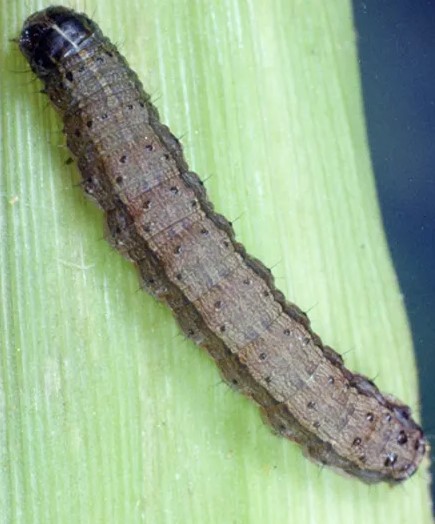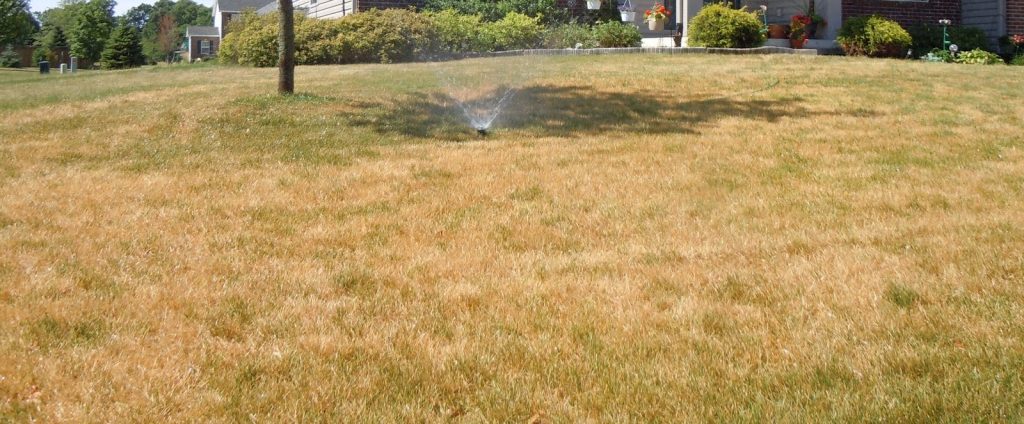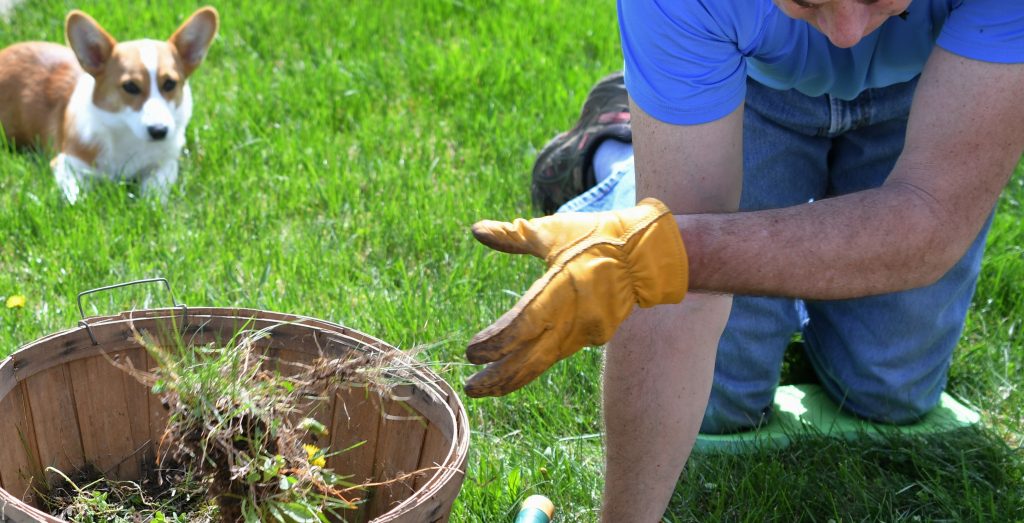October has arrived, bringing with it the promise of fall weather, and the joys of the holiday season, and first up is, of course, Halloween. While you’re busy planning costumes for the family and beginning to decorate your home and yard for the upcoming fun, pests may be lying in wait to play a trick on you while having themselves quite a treat. One of the major trick-or-treaters this season is armyworms. Armyworms are wreaking havoc on yards and crops in unprecedented numbers across the US this fall, and Texas is at the center of it all. Though a soldier costume may be just the thing to bring a smile to your child’s face this Halloween, armyworms in your yard are sure to bring nothing but ghoulish nightmares.

What do Armyworms Look Like?
The name “armyworms” evokes the image of an earthworm dressed in military camouflage, which isn’t fully inaccurate for the appearance of the larval stage of these pests. However, it hardly tells the full story of these insects, which are in truth not worms at all. Belonging to the insect order Lepidoptera, they are actually moths when fully grown, and the “worm-like” stage is just one part, albeit a very important part, of their life cycle.
Though there are many species of armyworms throughout Texas, the one most likely to attack your yard is the fall armyworm. These pests begin as tiny eggs deposited in large masses of 50 or more on surfaces such as desirable host plants, tree leaves, or man-made objects in yards (i.e. fences, light posts, chairs, etc.). Once hatched the larvae will grow quickly (within 2 to 3 weeks) to their full size, which is around 1 to 1.5 inches long. The larvae (caterpillars) are green, brown, or black and have stripes running along their body from head to tail: a yellow-ish stripe down the middle and a thinner black stripe on each side of that, and have 4 black spots near their back end. They also have a dark-colored head with a pale inverted “Y” marking on it. Once the caterpillar has finished its feeding, it will tunnel into the soil and enter the pupal stage. Within 14 days, the adult armyworm moth will emerge. Armyworm moths are generally a gray-ish color and have a wingspan of around 1.5 inches. Their forewings are a mottled dark gray, while their underwings are whitish.
Why are they called Armyworms?
As discussed above, the term “worm” is a misnomer as these pests are not worms at all; rather, they are caterpillars, the larval stage of a moth, they just happen to have a smoother body like a worm instead of a fuzzy one like many other caterpillars. So how did they get their name? Primarily, it derives from their behavior. As larvae, they move quickly, marching side by side, through lawns, fields, and crops in large numbers, leaving behind large swaths of destruction in their wake, much like an army. In fact, when faced with these pests you can often feel like you are waging war with an immense and intractable enemy.
Where do Armyworms Live?
Fall armyworms are highly sensitive to the cold and cannot survive the winter temperatures of north Texas. This means that they spend the winter months in south Texas and only begin to move northward when temperatures begin to rise in spring. Their peak season, however, as their name implies is during fall, when the temperatures are warm (but not blisteringly hot) and rain is prevalent, the ideal mixture for armyworms to thrive in.
As caterpillars, you will find them living on the plants they feed upon: turfgrass and crops. Eggs are difficult to spot and can be found on just about any surface in a yard (as discussed above). Moths are migratory but can be found near light sources or areas of lush plant growth (their preferred place to lay eggs) during nighttime hours when they are active.

What do Armyworms Eat?
As adults, armyworm moths are relatively innocuous and simply consume nectar. However, as larvae, they have voracious appetites and can consume copious amounts of plant material. Their preferred diet includes: turfgrasses (ideally warm-season varieties such as Bermudagrass), small grains, corn, sweet potatoes, beans, spinach, cucumber, potatoes, tomatoes, cabbage, and more. Caterpillars chew the green layer from leaves and leave behind a clear “window pane” area. The tips of leaves and grass blades are consumed first, but further damage happens quickly as they strip tissue from the leaves, first appearing brown and like drought damage, but rapidly progressing to a complete loss of foliage. Perhaps even worse, they feed primarily during the late evening and early morning hours, meaning your yard could seem fine when you go to bed but be nearly devastated by the time you wake up.
Are Armyworms Dangerous?
Though armyworms are not dangerous to people or animals, they can be devastating to crops and grasses. In a matter of hours they can devastate a lawn, field, or crop. Dalton Ludwick, AgriLife Extension entomologist, Corpus Christi, estimated that just 2 armyworms per square foot of land can consume around 84 pounds of foliage per acre. And most of this eating (around 85%) is done in the final 2 to 3 days of their larval stage. This means that the first sign of a problem is often immediately followed by massive destruction.
Fortunately, healthy, well-established grasses can often withstand the onslaught and will eventually recover. Newly planted or sickly grasses, and many crops, however, often do not survive an armyworm attack.

How do you Prevent Armyworms?
Unfortunately, there is very little you can do to prevent armyworms from invading your yard. As moths, these pests can travel great distances in relatively short periods of time and can take up residence in your yard without you ever knowing. Once in your yard, a single female moth can lay up to 2,000 eggs, and in a single year, there are often 4 or 5 generations of these pests, largely owing to their relatively short (28 day) life cycle. So is all hope lost? Should you just lay down AstroTurf or make your yard into a rock garden? While there isn’t a a lot of prevention you can do, there are a few things that can help (see below), and if armyworms do invade, The Bug Dude has the expertise, experience, and products needed to keep your yard from devastation.
- Keep a watchful eye on your grass and garden. At the first sign of damage, call The Bug Dude at 800-310-BUGS (2847) to get the issue diagnosed. If the problem is armyworms you won’t have much time between the first sign of a problem and complete devastation.
- Remove thatch, leaf litter, and other yard debris from your lawn.
- Eliminate crabgrass and other grassy weeds from your lawn; they are known host plants for armyworms.
- Except for during winter, minimize the use of outdoor lights at night to keep from enticing the moths into your yard.
- Watch for unusually large numbers of birds feeding in your yard and call The Bug Dude as soon as you notice this as it’s a sure sign of an infestation.
- Keep your lawn healthy; though this won’t prevent an issue, it will help your lawn weather an attack should one occur.
How do you Eliminate Armyworms?
At the first sign of armyworm trouble, call The Bug Dude at 817-354-5350. The only surefire way to get rid of these destructive pests is to use the correct products in the right areas as soon as an issue arises. Though it can often be tempting to try DIY or over-the-counter treatments for yard pests, when it comes to armyworms, you generally only have one shot to take them out before they destroy the yard or crops you have worked so hard on all season. Don’t let armyworms turn this Halloween into a nightmare, call The Bug Dude as soon as you see a problem and let us keep the holiday full of treats instead of tricks.
Further Reading:
“Armyworm” – Casey Reynolds, PhD, Mike Merchant, PhD and Diane Silcox Reynolds, PhD – AgriTurf – Texas A&M AgriLife Extension
“The Fall Armyworm – A Pest of Pasture and Hay” – Allen Knutson, Extension Entomologist, Texas A&M AgriLife Extension, Texas A&M AgriLife Research and Extension Center, Dallas
“Armyworms in Turfgrass” – Chris Sansone, Rick Minzemayer, and Mike Merchant Extension Entomologists, Texas AgriLife Extension – Insects in the City
“Fall Armyworms On The March Across Texas” – Adam Russell, Texas A&M AgriLife Communications – Texas A&M Today
“Battalions of armyworms are chomping up fields across the nation – sometimes overnight” – Caroline Anders – The Washington Post
“‘Unprecendented’ outbreak of armyworms are destroying lawns across the US, often overnight” – Christine Fernando – USA TODAY
Author Bio: Alissa Breach has been gaining knowledge and experience around pest control concerns over the last 12 years while working for Mid-Cities Pest Control. She has a creative writing BA from UW-Madison and is always pursuing new and interesting writing projects.




